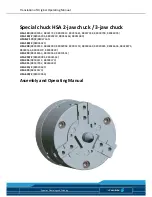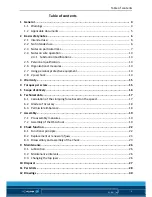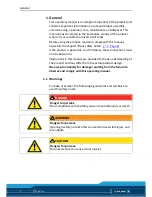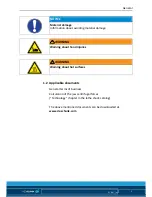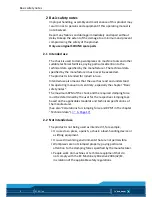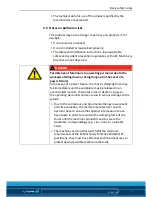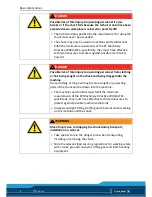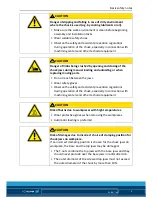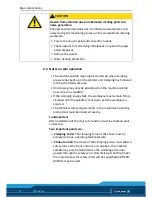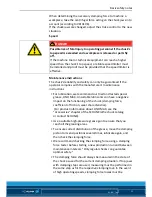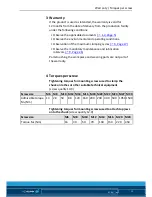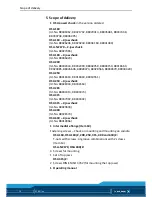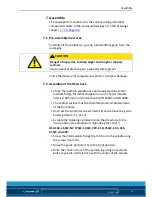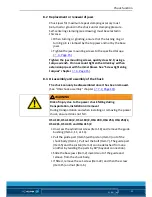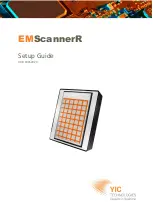
Basic safety notes
12
01.00| |en
accounted for due to the centrifugal force acting on the
chuck jaws. The operating clamping force must in this case be
determined by means of dynamic measurement.
• Move the clamping piston through to its end position several
times after 500 clamping strokes, at the latest. (This moves the
lubricant back to the surfaces of the force transmission. This
means that the clamping force is retained for longer).
Safety notes for servicing
Follow all the applicable legal norms for health and safety during
servicing. Use suitable personal protective equipment, especially
protective gloves, goggles and safety boots, paying particular
attention to the operating system and hazard assessment.
DANGER
Possible risk of fatal injury to operating personnel due to
chuck failure if the servicing instructions for the chuck are
disregarded!
The servicing instructions specified by the manufacturer must be
complied with to ensure safe operation of the chuck.
Work must be carried out by qualified specialist personnel with
the relevant safety training.
Use of special chuck jaws
When using special chuck jaws, please observe the following rules:
• The chuck jaws should be designed to be as light and as low as
possible. The clamping point must be as close as possible to the
chuck face (clamping points at a greater distance lead to great-
er surface pressure in the jaw guidance and can significantly
reduce the clamping force).
• Do not use welded jaws.
• If for constructional reasons the chuck jaws in special design
are heavier than the top jaws assigned to the clamping device,
greater centrifugal forces must be accounted for when defining
the required clamping force and the recommended speed.
• Screw the jaw mounting screws into the bore holes furthest
apart.

